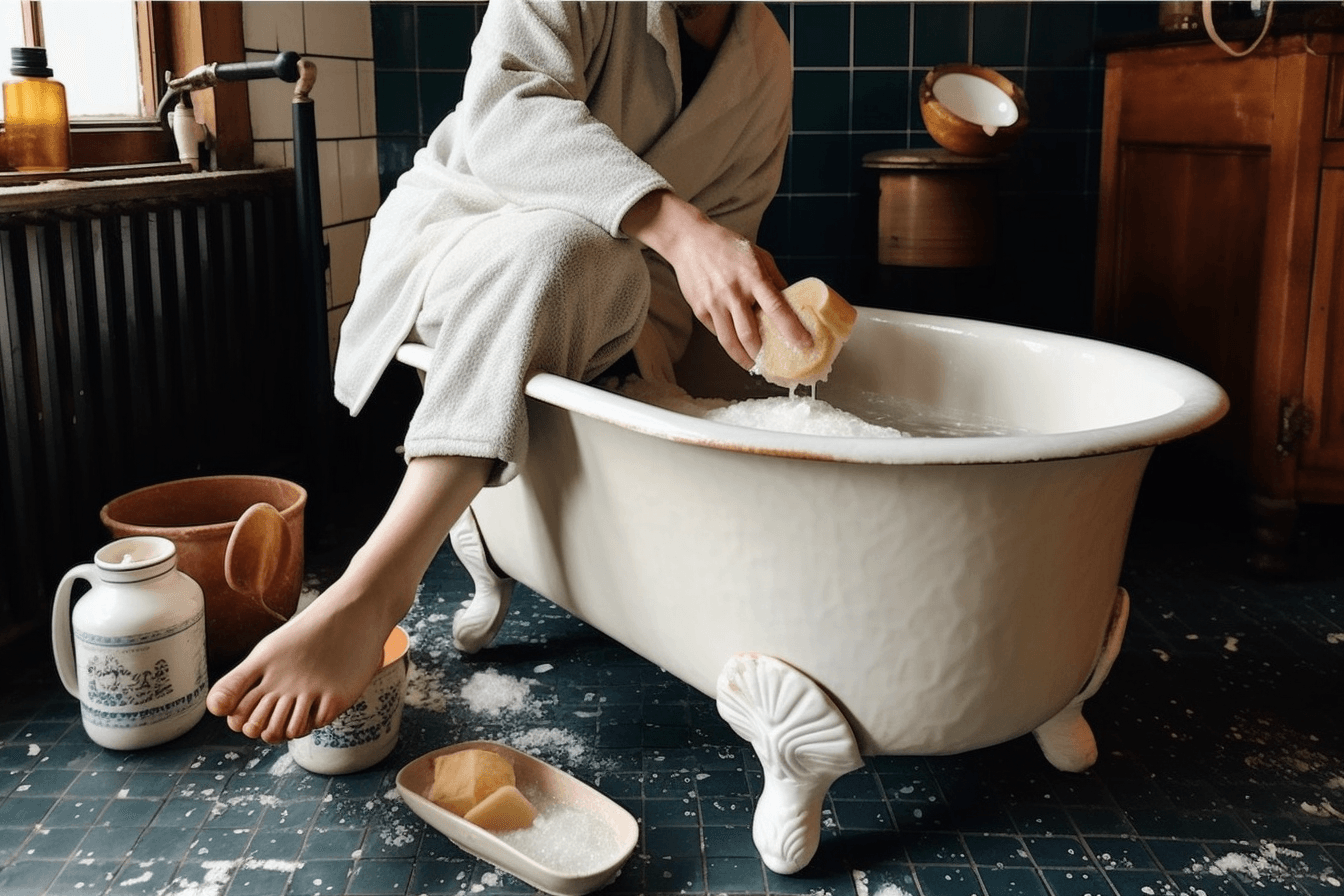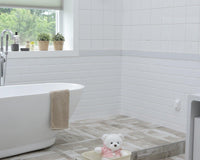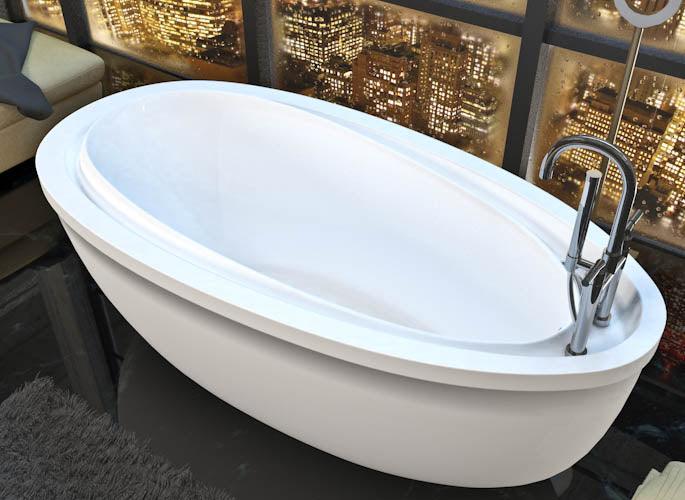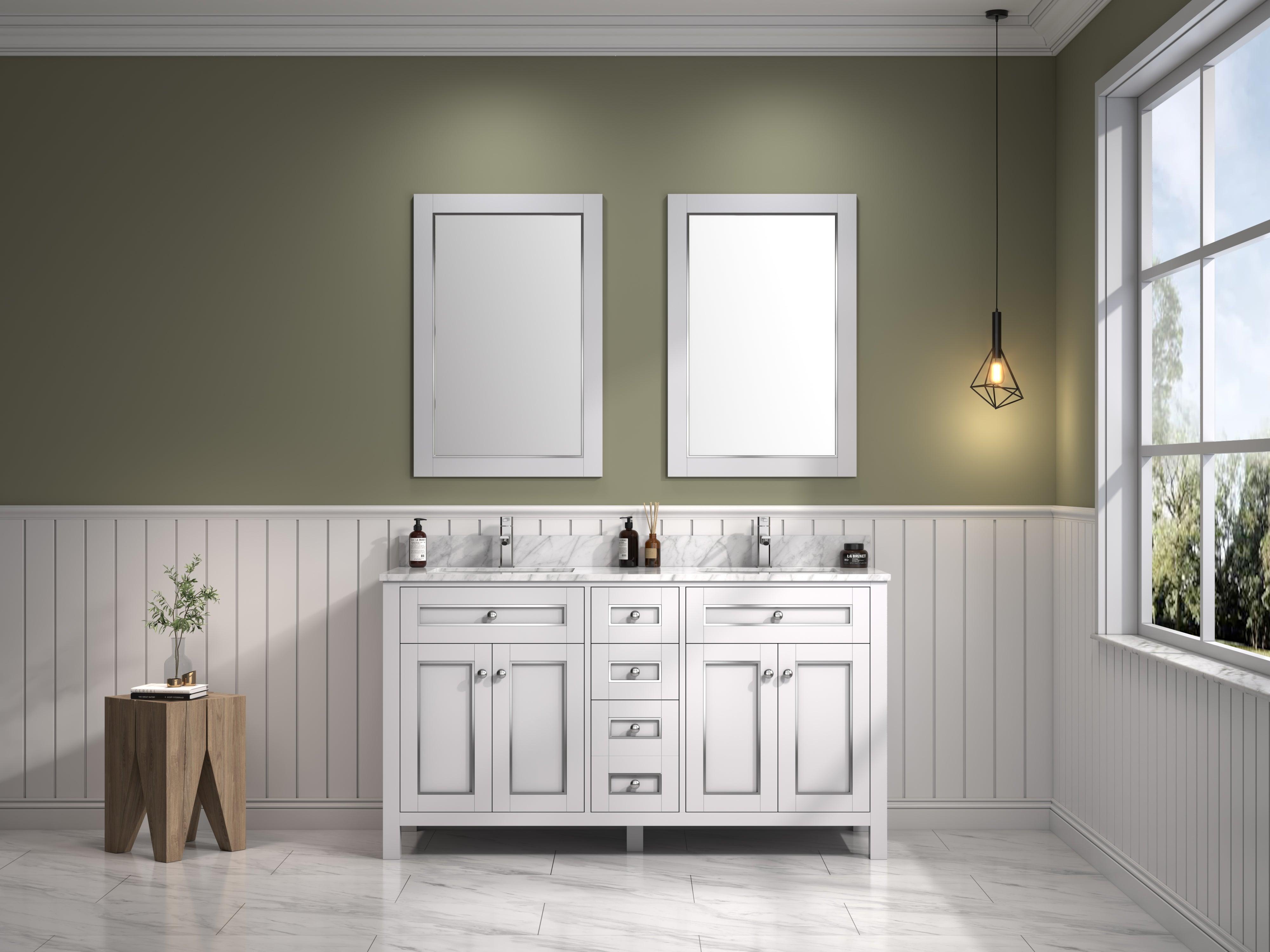Are you tired of scrubbing your bathtub, only to find that it doesn't look as clean as you'd hoped? Well, I'm here to tell you that keeping your bathtub looking like new is easier than you think. With the right tips and tricks, you can have a sparkling tub in no time!
In this article, I'll be providing an ultimate guide to cleaning and maintaining your bathtub so it looks good for years to come. Good maintenance practices are key when it comes to keeping any part of your bathroom clean and lasting longer. Your bathtub is no exception - by following my advice on how often to clean, what products work best and which techniques will yield the best results, you won't have any more problems with build-up or dirtiness.
So let's get started – read on for all the information you need about cleaning and maintaining your precious tub!
Assessing Your Bathtub's Cleaning Needs
When it comes to cleaning and maintaining your bathtub, you might feel overwhelmed by the task. Many people think of a clean bathtub as a sparkling oasis in their home - but getting there is half the battle.
As an expert on bathtub cleaning and maintenance, I'm here to tell you that assessing your tub's cleaning needs should be at the top of your list before starting any project. Start with checking for wear-and-tear like scratches or marks on the surface; these are good indicators of how much effort will likely be necessary when tackling this job.
Next, evaluate any damage such as rust spots or broken pieces that need repair work done first. Finally, determine what type of cleaner or product best suits your particular situation based on its current condition.
Now that you’ve assessed your tub’s needs, it’s time to move onto preparation: gathering all the supplies needed to make sure your bathroom sparkles!
Preparation: Gather Your Cleaning Supplies
Before you begin cleaning and maintaining your bathtub, it's important to gather the right supplies.
Preparing the area is key for a successful clean-up job; make sure to clear any items from the tub that could be in the way of your work. This will allow you to move around freely as you get started with your task.
When choosing tools for this project, opt for nonabrasive materials like cloths or sponges specifically made for cleaning bathtubs. Avoid using excessive amounts of commercial cleaners as they can damage certain surfaces over time if used excessively. Instead, create a solution made up of mild dish soap mixed with warm water and use it sparingly when needed.
After preparing and gathering all necessary supplies, you're ready to start tackling those pesky buildups such as soaps scum and hard water stains.
To do this safely and effectively, start by learning about different techniques that have been proven to remove these stubborn marks without causing further harm to your tub’s surface. Moving forward with confidence gives you an advantage while completing this particular task.
Removing Soap Scum And Hard Water Stains
Once your cleaning supplies are ready to go, it's time to tackle the soap scum and hard water stains.
For everyday build up of dirt, grime and mildew a combination of natural products like baking soda, vinegar and lemon juice can be used with hot water for scrubbing away these problem areas. Be sure to make use of gloves when handling any acidic solutions or other cleaning solutions that could irritate the skin.
When dealing with harder to remove soap scum and mineral deposits from hard water you may have to look into more aggressive methods. Using chlorine bleach at full strength will effectively break down any surface build up in one application but requires proper safety precautions due to its caustic nature. You can also combine equal parts white vinegar and dish detergent as an effective cleaner that is safe on surfaces while still removing tough stains.
No matter what method you choose, remember that regular maintenance goes along way towards keeping your bathtub clean and looking great! With just a little bit of effort every week or so you should be able to keep ahead of any buildup.
Moving onto deep cleaning with vinegar and baking soda is another step forward in maintaining your tub properly over time - regardless of how much use it sees on a day-to-day basis.
Deep Cleaning With Vinegar And Baking Soda
As a bathtub cleaning and maintenance expert, I'm here to tell you that deep-cleaning with vinegar and baking soda is one of the most eco friendly alternatives for green cleaning products. Not only does this method save money over store-bought cleaners, but it also has numerous benefits.
Vinegar and Baking Soda are natural disinfectants which can kill germs from common household items like bathroom surfaces without any harsh chemicals or toxic fumes. Plus they won’t harm your skin!
Vinegar and baking soda can be used together in many different ways: as an all purpose cleaner, scrubbing paste, grout cleanser, deodorizer, soap scum remover, etc., making them great choices for tackling tough stains or removing dirt buildup on your tub walls or flooring.
To get started with deep-cleaning using these two ingredients, first mix equal parts white distilled vinegar and water in a spray bottle. Then add 2 tablespoons of baking soda per cup of solution you created. Spray this mixture onto affected areas then let sit for 15 minutes before wiping off with a damp cloth or sponge. This simple process will help remove hard water deposits and other stubborn gunk from your bathtub.
Using vinegar and baking soda together is an easy way to keep your bathtub looking clean and sparkling throughout the year—without having to resort to harsher chemical solutions. Their gentle yet effective power makes them ideal for regular use—just make sure you don’t forget to rinse away residue after every application!
Moving on from here we'll look into utilizing professional cleaners for more specific tasks...
Utilizing Professional Cleaners
Vinegar and baking soda are both extremely effective in deep cleaning your bathtub, but sometimes you may need the help of a professional. Hiring professionals with specialized training can ensure that your bathtub is cleaned properly and efficiently so you don't have to worry about it again for some time. They also use more powerful chemicals than what's available to the general public, ensuring an even deeper clean.
For instance, cleaners often rely on alkaline-based products to break down dirt and grime quickly without damaging surfaces. These products come in many forms such as gels, pastes, or creams which are applied directly onto the affected area allowing the product to work its magic before being rinsed away.
Professional cleaners will know exactly how much product is needed and where it should be used for optimal results. Once these harsher chemicals have done their job, they need to be thoroughly washed off leaving behind no residue whatsoever. This ensures any remaining dirt or soap scum won’t become impacted into the surface making subsequent cleanings harder than necessary.
With this method, not only is your bathtub brought back up to pristine condition but future maintenance becomes easier too! Now let's move on to cleaning the grout and tiles - another important step in keeping your tub looking good as new!
Cleaning The Grout And Tiles
Cleaning the grout and tiles is an important part of keeping your bathtub in top condition. To ensure long-term cleanliness, it’s essential to use a combination of methods that not only make these elements look better but also last longer.
Here are some steps you can take to keep your grout and tiles looking fresh:
- Clean regularly with soap and water or other mild cleaners like baking soda or vinegar.
- Use a brush or toothbrush to scrub away any dirt or debris stuck on the surface.
- Bleach grout as needed to prevent mold growth and get it back its original color.
- Seal tile and grout lines with a sealant every few years for extra protection against moisture buildup.
- Avoid using harsh chemical cleaners when possible as they may cause discoloration over time.
When done correctly, cleaning the grout and tiles will leave your bathtub sparkling clean without having to worry about damage from everyday wear and tear. Not only does this help maintain their aesthetic appeal, but it also prevents permanent staining so you don't have to replace them anytime soon!
Next up, maintaining a clean drain is key to achieving peak performance from your tub.
Maintaining A Clean Drain
Many people feel overwhelmed when it comes to cleaning out their bathtub drain and unclogging it. But, with a few simple steps, you can easily keep your drains clear of blockages and clogs without having to call in an expensive plumber.
Firstly, the best way to prevent build-up is by regularly flushing warm water down the drain, followed by a vinegar and baking soda solution (1/2 cup each) that will help clean away any residue or dirt. This should be done at least once per week for optimal results.
Secondly, if you do experience a blocked drain, use a plunger before turning to chemical solutions as they may damage your pipes over time.
And lastly, there are several natural remedies available such as boiling water or using wire hangers which can often work wonders on stubborn clogs!
Now let's move onto keeping the fixtures and handles around your tub sparkling clean…
Cleaning Fixtures And Handles
Now that the drain is sparkling clean, it's time to move on to fixtures and handles. These parts of the tub are used frequently, so they require special care in order to remain shining and attractive. Here’s a quick guide for cleaning them:
-
Start by polishing hardware with a soft cloth or non-abrasive pad.
-
Next, use an all-purpose cleaner such as liquid soap or baking soda mixed with water to scrub away residue from surfaces.
-
Rinse off your freshly cleaned fixtures and handles with warm water before drying them completely with a towel.
After these steps have been completed, you should consider using a protective sealant on any metal fixtures or porcelain finishes to keep them looking like new for years to come! This simple step will help make sure your bathtub looks its best for much longer than usual - no extra effort required!
Using A Protective Sealant
When it comes to using a protective sealant, it's important to choose the right one for your bathtub. Make sure you get one that's specifically designed for your type of tub, so you can be sure it'll do the job right.
Applying the sealant is easy, just follow the instructions on the packaging. Be sure to use a brush to work the sealant into any cracks, and leave it to dry before you start using your tub again!
Choosing The Right Sealant
As a bathtub cleaning and maintenance expert, I'm here to tell you that choosing the right sealant is essential for protecting your tub.
There are several sealing materials available on the market, so it's important to pick one suited best for your needs.
The most popular type of sealants are acrylic latex caulk or tile grout protectants – both of which come in clear or pigmented varieties.
Acrylic latex caulks provide good protection against moisture penetration and can resist mildew growth if applied correctly; however, they require more frequent re-coating than tile grout protectants.
Tile grout protectants offer better water resistance but need to be reapplied every year or two.
Whichever product you choose, make sure it’s designed specifically for use around bathroom fixtures and can withstand temperatures up to 100 degrees Fahrenheit (37 Celsius).
So take the time to select the perfect sealant for your bathtub - you'll be glad you did!
Applying The Sealant
Now that you've chosen the perfect sealant for your bathtub, it's time to learn how to properly apply it. Installing a protective sealant is easy - all you need are some basic supplies and a few simple steps.
First, make sure the surface of your tub is clean and dry before applying any sealants. Then use a caulking gun or tube of caulk to evenly spread the sealant along the edges in thin bead-like lines.
Finally, smooth out the bead using an applicator tool such as a putty knife or rubber spatula and allow adequate drying time so that your sealant lasts longer!
Scheduling Regular Cleanings
Maintaining your bathtub is an essential part of keeping a clean and healthy home. Regular cleaning is the key to ensuring your tub stays in top condition, so it's important to establish a schedule that works for you.
Start by scrubbing away any dirt and grime with suitable tools like brushes, sponges, or cloths. Pay extra attention to hard-to-reach areas such as corners and crevices where dirt can accumulate quickly. Focus on using proper scrubbing techniques to remove soap scum and other debris from the surface of the tub without damaging it.
For effective odor elimination, use products designed specifically for this purpose. Avoid harsh chemicals which could easily damage the finish of your bathtub; instead opt for natural alternatives like vinegar or baking soda mixed with water to create a safe but powerful cleaning solution. Make sure to rinse well afterwards!
With regular maintenance, your bathtub should remain free of odors and looking its best all year round.
Frequently Asked Questions
What Is The Best Type Of Cleaning Supplies To Use?
Keeping your bathtub clean and in pristine condition requires the right cleaning supplies.
For ultimate results, experts recommend avoiding harsh chemicals as much as possible, opting instead for natural ingredients such as white vinegar or baking soda to tackle tough stains and keep mold at bay.
Not only are these options safer for your home environment, but they're also gentler on the tub's surface - ensuring it looks like new for years to come!
Are There Any Natural Alternatives To Professional Cleaners?
When it comes to cleaning and maintaining your bathtub, you may be looking for natural alternatives to professional cleaners. Eco friendly products and homemade solutions can often do the trick without harsh chemicals or fumes.
Baking soda is a great cleanser that can remove stubborn stains while vinegar helps to disinfect surfaces. To make an effective cleaner, mix equal parts of baking soda and white vinegar with warm water in a spray bottle and use as needed on bathroom fixtures.
For tougher dirt and grime, consider using castile soap diluted in water - this should help to get rid of any residue quickly!
How Often Should I Seal My Bathtub?
It's important to properly seal your bathtub every 12-18 months in order to prevent mildew and mold from forming.
You see, sealing the tub not only helps keep it looking pristine, but also protects against water damage.
It can be a bit of a chore--but trust me when I say that it will save you time and money down the line!
To make sure you're doing it right, begin by cleaning with warm soapy water then dry thoroughly before applying the sealant with a sponge or cloth.
After allowing the sealant to set for at least 24 hours, buff off any excess.
By following this process regularly, you'll have an aesthetically pleasing bathroom with minimal maintenance required.
How Do I Prevent Soap Scum And Hard Water Stains?
Soap scum and hard water stains are the bane of any bathtub owner. There's no single foolproof way to avoid residue and buildup, but there are certain steps you can take to prevent them from forming in the first place.
Start by using a squeegee or damp cloth after every shower to wipe away excess soap suds; this'll help keep your tub looking clean.
Next, consider investing in a cleaner specifically designed for removing soap scum, as well as one formulated for hard water stains if you have an issue with those.
Finally, regular maintenance is key! Often times these substances aren't visible until it's too late; make sure to give your tub a deep clean at least once per month to ensure long-term sparkle.
What Is The Best Way To Clean The Grout And Tiles?
For spotless grout and tiles, preventive care is key!
Start by cleaning the space with a mild detergent - this will help to prevent dirt and grime buildup.
Next, use an old toothbrush or specialty scrub brush designed for tile work to get in between those hard-to-reach spaces of your tub's nooks and crannies.
And don't forget about the sealant; give it a good cleaning once every few months to keep that protective layer intact.
With these simple steps, you'll have pristine ceramic surfaces that look like new each time you take a bath.
Conclusion
In conclusion, proper cleaning and maintenance of your bathtub is essential for keeping it looking as good as new. If you follow the simple steps outlined in this guide, your tub will be sparkling like a diamond!
Just think of yourself as a master jeweler polishing their finest piece. With regular care and attention, you can keep your bathtub shining bright day after day.
You don't need to break the bank with professional cleaners either; there are plenty of natural alternatives that are just as effective if used correctly.
By taking the time to seal, clean and scrub on a regular basis, you'll soon have a bathroom oasis that's fit for royalty.










